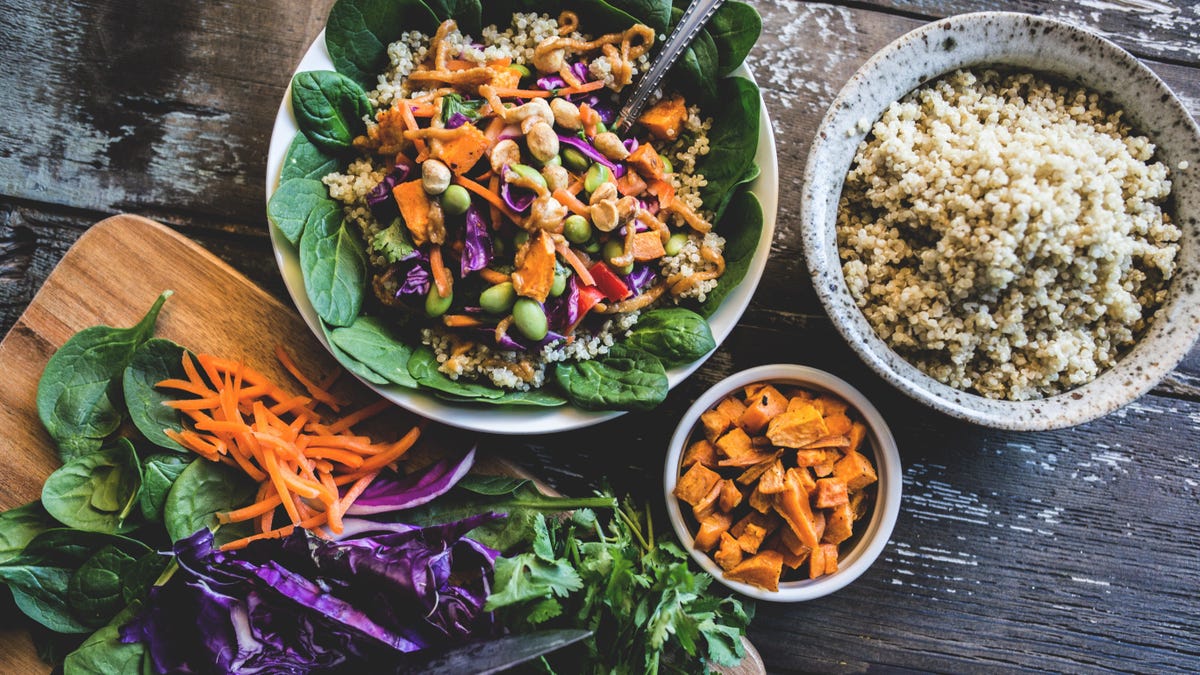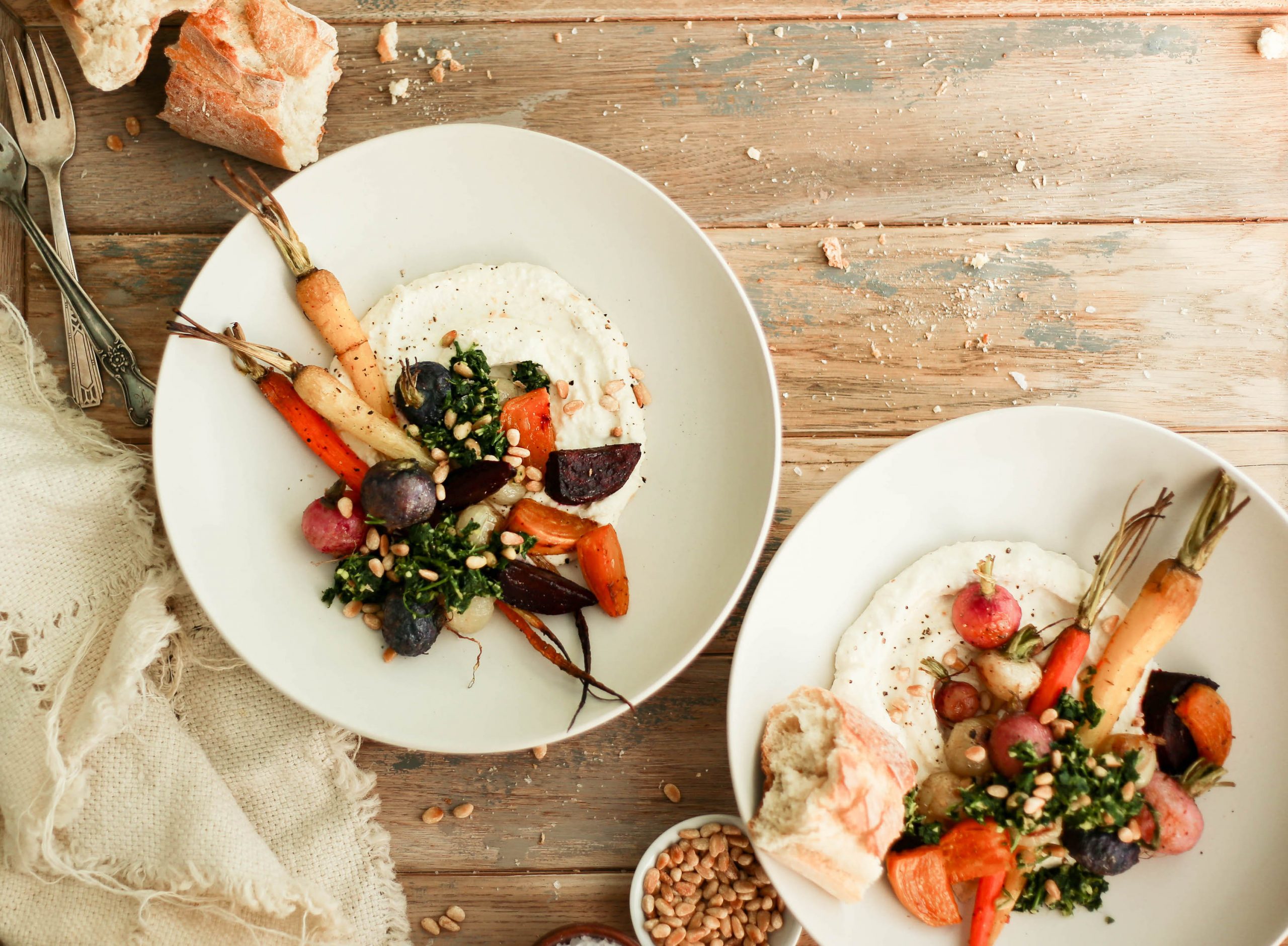How to Make the Perfect Grain Bowl
The allure of grain bowls, Buddha bowls, and protein bowls is that, if they’re made right, the quantity and diversity of ingredients keep your palate interested until the very last bite. That “if” is important. You’d think combining a...

The allure of grain bowls, Buddha bowls, and protein bowls is that, if they’re made right, the quantity and diversity of ingredients keep your palate interested until the very last bite. That “if” is important. You’d think combining a load of fun ingredients would lead to effortless satisfaction, but I’ve gone to cafés and paid an embarrassing sum for bowls that ended up being bland, mushy, and joyless. Fortunately, you can use these simple tips to make a grain bowl that sings with flavor and exhilarates your palate.
Season the heck out of your protein
Whether it’s animal protein or plant-based, it’s one of the more bulky components in your bowl, and the thing you’re probably looking forward to the most. The protein must taste delicious, and it must be powerful. Between the grains and the possible beans or veggies, there are a lot of bland ingredients to contend with. The seasoning needs to be strong enough to season the protein and offer some flavor to the meek ingredients around it. Marinate the protein, or slow cook it in a flavorful sauce. If you’re baking or pan frying it, add a light rub of dry seasoning as well. (Season your beans and veggies too, while you’re at it. Season everything.)
Bring in the crunch
I once had a grain bowl of brown rice, black beans, roasted sweet potato, a soft boiled egg, and hummus. It sounded good on the menu, but everything was nearly the same texture, and each component was mushier than the last. Mushy isn’t bad, but it can dominate grain bowls, as so many popular grain bowl ingredients have a soft texture. Add some contrast and include crunchy components. Try chopped nuts, granola, julienned raw root veggies, crumbled plantain chips, fried garlic, or fried-anything, really. The crunch will give you a break from the softness, and keep your meal from becoming a dreaded mush bowl.
Have a salty, tangy, sour power star
You might be looking forward to your protein, but I don’t think it’s the most important ingredient. To make a grain bowl that pops, you need a salty, tangy, sour, power star. Ingredients like kimchi, dill pickle chips, sauerkraut, olives, feta cheese, capers, pickled corn, or pickled red onions pack a lot of flavor power, even in small amounts. The salty, sour brine that many of these ingredients steep in discreetly soaks into the neighboring components, hinting at their personality before you get a smack of sour. When you do, it’s a bright and refreshing reset. Let’s call it a fermented palate cleanser, shall we?
Call in the herbs
Adding herbs to your bowl of goodies is a small, but powerful technique. Mince a single sprig of cilantro, parsley, basil, or tarragon to add another irresistible layer of flavor to your bowl. They don’t even have to be fresh herbs. I know they’re not always easy to keep around; I consistently find bags of partially decomposed herb sludge in the bottom of my vegetable drawer. If the fresh variety isn’t in the cards, use a sprinkle of the dried stuff in your spice cabinet, or add a spoonful of pesto.
Use a dip
I know I’ve been harping on mushy stuff, but adding a dip is different. I swear. It falls somewhere between bulky ingredient and dressing. There are two ways I like to incorporate a dip: smearing it on the bottom and wall of the bowl, or dropping it on top. Spreading it allows you to flavor the bottom of the grain bowl, which often contains your last bites and is the most unseasoned portion of the bowl.
Dropping dip on top allows you to be a little more selective. Mix it around with main ingredients, or carefully choose which items you want to smother in dip. I enjoy a dollop of hummus, tangy plain yogurt, or baba ganoush in my bowl, but go where your heart leads you. Try jarred French onion dip, mango salsa, or tzatziki.
Sauce it
After everything is arranged in the bowl, the final move is to sauce it. I’m not suggesting you make a pan sauce, or break out the blender (although you certainly could); sauce doesn’t have to be anything fancy. Use something quick and on the runny side, so it can trickle down and mingle with the other components. I usually browse my refrigerator door library of condiments because nearly anything there will work. Use a hearty squeeze of lemon juice, a shake of hot sauce, of a spoonful of some coconut milk, chili crisp, or a splash of wine. (Listen, it’s in my fridge door, and my definition of “sauce” includes wine.)
Making a grain, veggie, or protein bowl is an excellent opportunity to turn half-empty fridge ingredients into an incredible meal. Keep these tips in mind to heighten flavor and texture, and you’ll be eager for the next one.

 FrankLin
FrankLin 
































